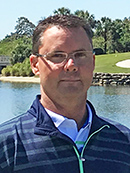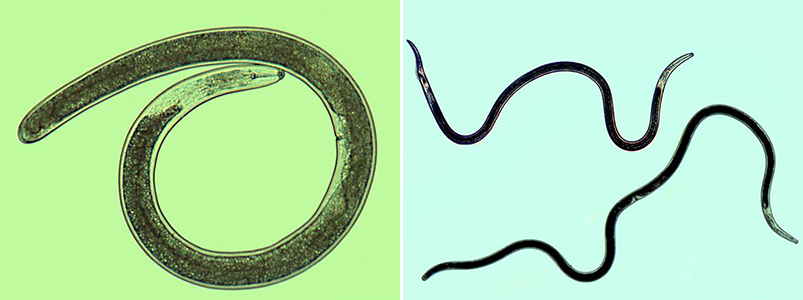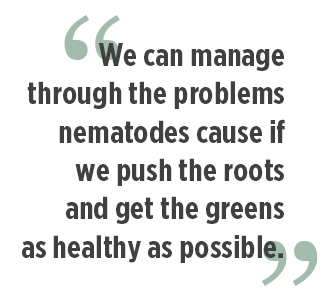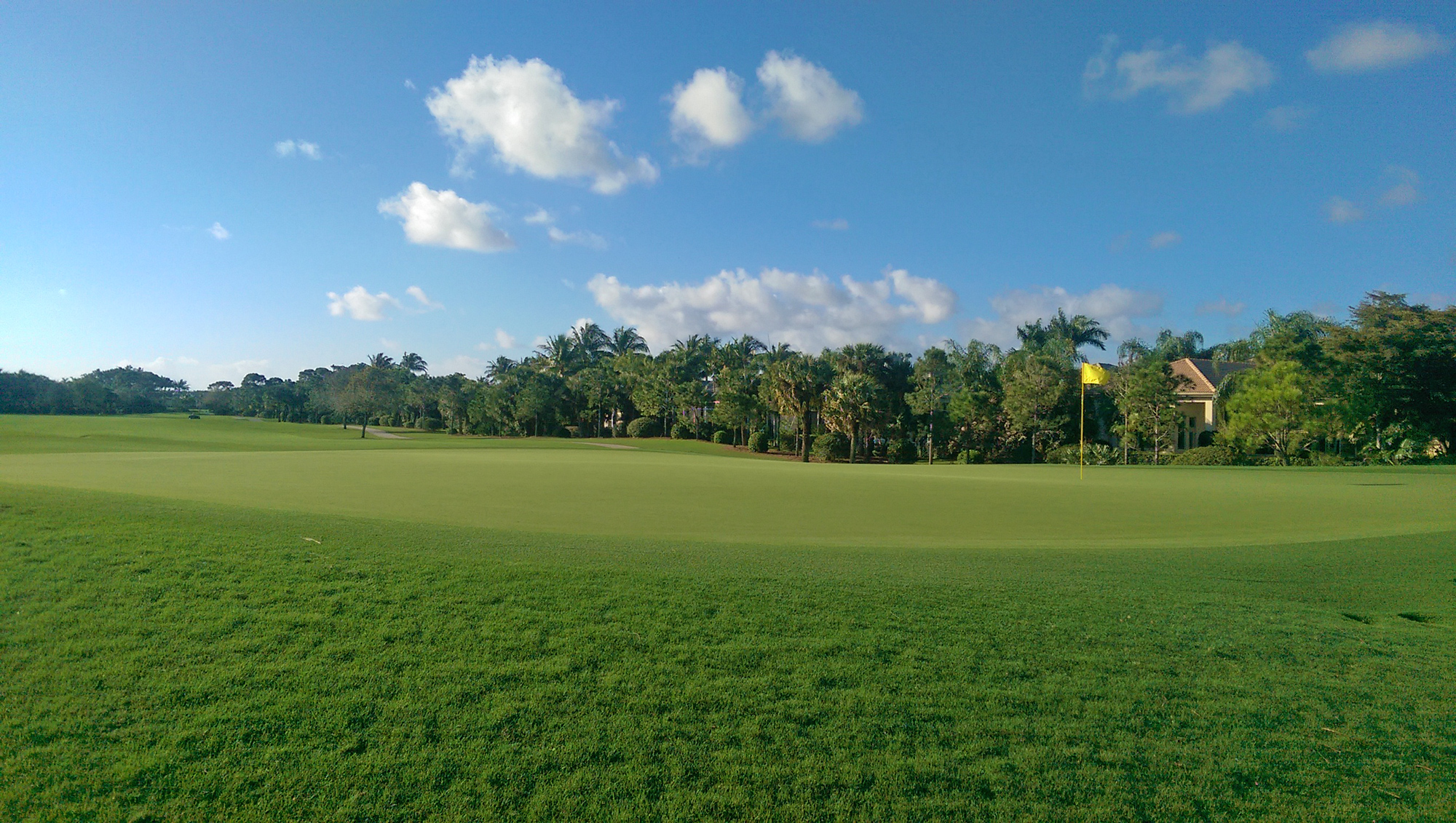 Kevin Frost, CGCS, is knocking on wood.
Kevin Frost, CGCS, is knocking on wood.
Why? Because the greens and the roots at BallenIsles Country Club in Palm Beach Gardens, Fla., are as good as the longtime superintendent has ever seen them.

Kevin Frost, CGCS
“Right now, we’ve got the best root structure I’ve ever seen since I’ve been on property,” says Frost, who was promoted to Director of Agronomy last year, after working five years as the senior superintendent at the 54-hole facility managed by Troon. “To have two-and-a-half, almost three-inch roots on TifEagle greens in March? It’s really encouraging.”
Attacking the root of the problem
It’s not always been such a sunny forecast at BallenIsles. The course has been battling nematodes for years — the minutes from greens committee meetings 25 years ago go into great detail about the efforts dedicated to fighting the rootkillers. When the North course was rebuilt in 2013, it seemed to make nematode populations only stronger.
“Nematodes — without question — are my main nemesis,” Frost says. “There are a lot of products out right now, a lot of new chemistries. They may have been tested but they haven’t been on the market long enough that superintendents can say, ‘This is definitely the only way to control these.’”

Left: Sting nematode (Belonolaimus longicaudatus). Right: Lance nematodes (Hoplolaimus spp.).
Frost has been working with Syngenta’s Lane Tredway, Ph.D., to try to find the perfect combination of products to get the best results. Interestingly, while he had early success battling sting nematodes, he’s had to find a different recipe to control lance nematodes.
 “You need an arsenal of two to three different products in order to achieve decent results,” Frost says. “We’re using Divanem to control lance and root-knot nematodes and with its continued use have seen a reduction in nematode counts of up to 40 percent.”
“You need an arsenal of two to three different products in order to achieve decent results,” Frost says. “We’re using Divanem to control lance and root-knot nematodes and with its continued use have seen a reduction in nematode counts of up to 40 percent.”
The 1,400-plus members have taken notice and they understand: The better the condition of the roots, the better they can perform allowing Frost and his team the ability to provide a product his members are accustomed to and recover from environmental pressures.
“We’ve done a good job educating our members and board about the problems nematodes cause,” Frost says. “We realize that we can manage through those problems if we push the roots and get the greens as healthy as possible.”

Other agronomic essentials
So, what other challenges keep Frost up at night? He says time management always is a struggle — there aren’t enough hours in the day. And of course, another pest problem looms as mole cricket season quickly approaches.
 One battle he doesn’t worry about anymore is that overnight Florida soaker that could shut down mowing for a few days. His use of Primo Maxx PGR gives him the peace of mind that it’s OK to miss a day or two of mowing if needed. Primo Maxx is a staple in Frost’s agronomic plan to keep clippings down.
One battle he doesn’t worry about anymore is that overnight Florida soaker that could shut down mowing for a few days. His use of Primo Maxx PGR gives him the peace of mind that it’s OK to miss a day or two of mowing if needed. Primo Maxx is a staple in Frost’s agronomic plan to keep clippings down.
“If we don’t use it, and we get an overnight Florida rain event, you’re right behind the 8-ball,” Frost says. “We exclusively use Primo. I’ve always been a Primo guy because it works.”

Tweet @SyngentaTurf and tell us how you #ConditionPerformRecover.
If you have areas of your course that are constantly weak or susceptible to stress, nematodes may be a contributing factor. The first step to diagnose a nematode problem is to collect and send a soil sample to a laboratory for analysis. It typically costs $20 or less to have a nematode sample analyzed, making it one of the most inexpensive diagnostic tests that can be done for a golf course. Visit Nematode Knowledge and:
- Watch a step-by-step tutorial with Dr. Billy Crow collecting and shipping soil samples.
- Locate laboratories in your state.
- Download a sampling guide.
- Watch a nematode webinar and earn GCSAA education points.
To learn how you can earn an an Amazon™ Echo™ Spot with the purchase of Divanem, visit GreenTrust365.com/SeasonalProgram
Divanem is a Restricted Use Pesticide.
This page was produced by North Coast Media’s content marketing staff in collaboration with Syngenta. NCM Content Marketing connects marketers to audiences and delivers industry trends, business tips and product information. The Golfdom editorial staff did not create this content.
Photo: Jonathan D. Eisenback, Virginia Polytechnic Institute and State University, Bugwood.org





